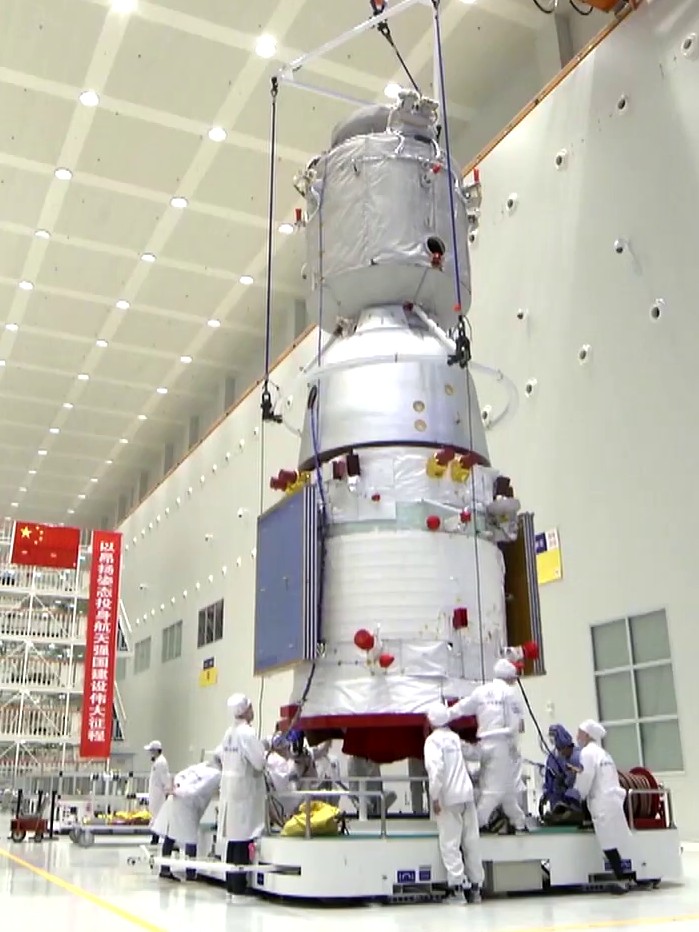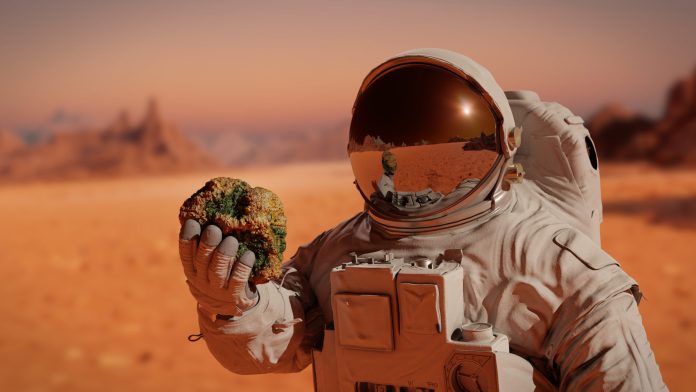
It started with a comet racing past Mars at 130,000 mph, a camera designed for Martian landscapes straining for its fleeting details, and scientists poised to unlock secrets older than the Sun itself. NASA’s interstellar target, the comet 3I/ATLAS, is going to be unveiled in unprecedented clarity, while on Earth, artificial intelligence rewrites the timeline of life’s emergence and three astronauts on board China’s Tiangong station wait uneasily for their ride home.

1. HiRISE’s Pursuit of the Fastest Visitor
The High Resolution Imaging Science Experiment (HiRISE) camera on NASA’s Mars Reconnaissance Orbiter was never built to chase comets. For almost two decades, it mapped Mars at 9-inch-per-pixel resolution, resolving boulders, dust devils, and seasonal ice changes. But in early October, engineers reoriented the orbiter to track 3I/ATLAS as it streaked past Mars from 19 million miles away. The challenge was formidable: avoid stray light from Mars, dodge bright background stars, and freeze-frame a nucleus surrounded by a volatile coma. Even at reduced 19 miles per pixel, the images could show sunward jets-streams of sublimated gas and dust-that might refine the comet’s rotation rate before and after perihelion.

2. A Solar System-Wide Observation Campaign
NASA’s campaign to capture 3I/ATLAS has spanned twelve spacecraft and many observatories. The closest views came from the Mars Reconnaissance Orbiter; MAVEN recorded ultraviolet spectra to probe composition. The Perseverance rover caught a faint glimpse from Mars’ surface. Heliophysics missions like the STEREO and SOHO tracked the comet near the Sun when ground-based telescopes were blind.

Psyche and Lucy spacecraft added distant perspectives, stacking images to detail the coma and tail. This coordinating network offers a rare comparative dataset between an interstellar object and solar system comets, potentially revealing just how other star systems’ chemistry might diverge from our own.

3. The Oldest and Most Massive Interstellar Comet
Discovered on July 1 by the ATLAS telescope in Chile, 3I/ATLAS is only the third confirmed interstellar object to enter our solar system. Estimated at 11 kilometers wide and over 7 billion years old, it predates the Sun by billions of years. Its irradiated crust, formed under relentless cosmic rays, complicates analysis of its native materials. Spectroscopy already shows unusual carbon dioxide richness, hinting at volatile inventories shaped far from our stellar neighborhood. As it heads toward its closest Earth approach on Dec. 19, the HiRISE images may sharpen trajectory models ten-fold, guiding ESA’s JUICE mission for a later encounter.

4. AI detects 3.3-billion-year-old life traces
While the telescopes are after ancient ice, geologists have taken to machine learning to decipher the ancient carbon. A Carnegie-led team used pyrolysis gas chromatography mass spectrometry to analyze over 400 samples, including modern plants and meteorites. An artificial intelligence, trained on molecular “fingerprints” of life, successfully distinguished between biotic and abiotic origins with more than 90% accuracy. It identified biosignatures in 3.3-billion-year-old rocks and extended the molecular record of oxygen-producing photosynthesis back 800 million years, to 2.5 billion years ago. Such faint chemical “whispers” had survived tectonic burial, heating, and fracturing and provide a new tool for upcoming astrobiology missions targeting Mars or icy moons.

5. Reading Molecular Ghosts
Not in finding intact fossils, the AI’s strength lies in recognizing the distribution patterns of degraded biomolecules. The molecules of life are selectively abundant, while abiotic carbon contains random assortments. Fragment patterns preserve the ecological and evolutionary information, even in the absence of original biomolecules. This method can double the window of study for ancient biospheres, and the technique can be adapted to onboard instruments in planetary missions, reducing reliance on pristine samples.

6. The Hidden Energy Cost of Quantum Timekeeping
Meanwhile, physicists investigating the thermodynamics of nanoscale clocks have made a surprising discovery: for such devices, measurement not operation is the dominant thermodynamic cost. A double quantum dot clock that ticked via single-electron hops consumed negligible energy to run. But reading those ticks required as much as a billion times more energy, shattering any notion that the energy cost of measurement is minuscule. “It is the measuring act more than the ticking as such that provides time with an arrow,” says Florian Meier of TU Wien. With this realization, attention will move to developing more efficient readout mechanisms in quantum sensors and navigation instruments where timing accuracy is paramount.

7. Stranded on Tiangong
On Nov. 14, China’s Shenzhou-20 crew returned to Earth aboard the capsule meant for Shenzhou-21 astronauts after debris struck and cracked their own vehicle’s viewing port. The Shenzhou-21 crew Zhang Lu, Wu Fei, and Zhang Hongzhang now remain aboard Tiangong without a functional lifeboat. A replacement capsule, Shenzhou-22, could launch as early as Nov. 24, but until then, any station emergency poses heightened risk.

Tiangong’s compact size about one-fifth the ISS may have influenced the decision to rotate crews before a new capsule arrived. The situation underlines the vulnerability of crewed missions to orbital debris and the importance of redundant return systems. From a comet older than the Sun to molecular echoes of Earth’s earliest life, and from the thermodynamics of time itself to the fragility of human presence in orbit, these developments reveal the breadth of science at the frontier-and the engineering challenges that define it.


